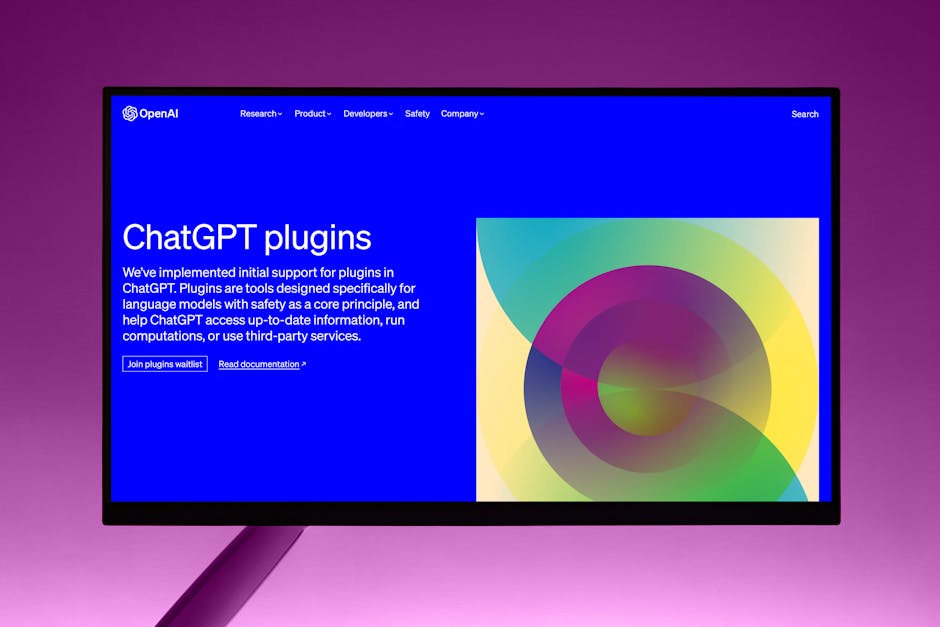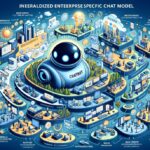The GPT Store environment represents a frontier for developers where the creation, sharing, and monetization of Generative Pre-trained Transformer applications unfold. This new realm offers a myriad of possibilities for GPT builders to contribute to the evolving landscape of artificial intelligence. As we explore this environment, we will uncover the inherent opportunities and challenges that come with it, highlighting its impact on the development and proliferation of AI technology.
Understanding the GPT Store Environment
Table of Contents
The GPT Store environment is a platform or space where developers, also known as GPT builders, can create, share, and sell their Generative Pre-trained Transformer (GPT) applications. These are artificial intelligence (AI) programs designed to understand and generate human-like text based on the input they receive. The concept is akin to a marketplace but focused on software and AI tools that utilize advanced text processing capabilities.
The GPT Store environment offers a unique set of opportunities and challenges for GPT builders. One of the main implications of this environment is that it democratizes access to AI technology. Before, building and deploying AI applications required significant resources and expertise. Now, with the GPT Store, independent developers and smaller companies can create and distribute their AI applications more easily. This accessibility fosters innovation as more individuals can experiment with and contribute to the field of AI.
Moreover, the GPT Store environment acts as a catalyst for collaboration among developers. Since the platform can host a wide variety of applications, it encourages builders to share insights, learn from one another, and possibly even collaborate on projects. This communal aspect of the GPT Store can accelerate the development of new and improved GPT applications, as builders can quickly adopt best practices and adapt to user feedback.
Another impact on GPT builders is the streamlined path to monetization. Previously, monetizing an AI application might have required a developer to have a business infrastructure in place to sell and distribute their product. The GPT Store simplifies this process by handling transactions, thereby allowing developers to focus on creating and refining their applications. This ease of access to a potential revenue stream can motivate more builders to enter the field and innovate.
However, the GPT Store environment also introduces competition among developers. As more GPT applications become available, standing out in the marketplace can be challenging. This competition can drive quality and innovation but might also discourage some developers, especially those new to the field or without the means to compete effectively in marketing their products.
Furthermore, the GPT Store can influence the kind of applications being developed. Builders might prioritize projects they believe will sell well over those that are novel or experimental. This commercial pressure could shape the direction of GPT technology development in ways that prioritize marketability over other values, such as privacy, security, or social impact.
In conclusion, the GPT Store environment is shaping the landscape for GPT builders by making AI technology more accessible, encouraging community and collaboration, providing a direct path to monetization, and injecting a competitive element into the development process. While these factors can drive innovation and growth in the AI field, they also introduce challenges that developers must navigate to succeed.

Photo by mercantile on Unsplash
Accessing and Leveraging Support Resources
Navigating the GPT Store: A Guide for Builders to Optimize Support Resources
The GPT Store has emerged as a vibrant ecosystem fostering the growth and development of AI applications. For GPT builders, this space is not only a marketplace for innovation but also a rich source of support and resources. However, effectively tapping into these resources requires a strategic approach. This discussion aims to guide GPT builders on how they can efficiently access and utilize support resources within the GPT Store to enhance their projects and streamline their development process.
Understanding the Layers of Support in the GPT Store
The GPT Store is structured to provide various layers of support, catering to the diverse needs of builders. At its foundation, it offers extensive documentation and tutorials designed to help beginners and experts alike. These written guides cover a wide range of topics from basic setup and operations to advanced customization and functionality enhancements. Builders should make it a habit to consult these resources regularly to keep abreast of new features, best practices, and troubleshooting tips.
Engaging with the Community Forum
Beyond the static resources, the GPT Store encourages dynamic interactions through its community forum. This digital hub is where builders can pose questions, share insights, and seek advice on specific challenges they encounter. The benefit of engaging with the community forum lies in the collective knowledge and experience of its members. Here, builders can find not just solutions to technical issues but also inspiration for new features and innovative use cases. Regular participation in the forum enriches the builder’s toolkit, fostering a collaborative spirit that is central to the GPT Store’s ethos.
Leveraging Developer Workshops and Webinars
For those seeking structured learning opportunities, the GPT Store organizes developer workshops and webinars. These sessions are invaluable for builders aiming to deepen their understanding of GPT technologies and explore their full potential. Workshops and webinars are conducted by experts and often include live demonstrations, Q&A segments, and interactive discussions. Builders should stay informed about upcoming events through the GPT Store’s announcement channels and make an effort to attend these sessions. Not only do they provide practical knowledge, but they also offer networking opportunities with peers and industry leaders.
Participating in Beta Programs and Feedback Loops
The GPT Store is committed to continuous improvement, and builders can contribute to this process by participating in beta programs and feedback loops. These initiatives allow builders to test new features and tools before they are widely released. More importantly, they offer a platform for builders to voice their observations, suggest enhancements, and report bugs. This direct line of communication with the GPT Store’s development team can lead to more tailored support resources and a better overall development environment for builders.
ConclusionThe GPT Store offers a comprehensive suite of support resources designed to empower builders at every stage of their development journey. By understanding and engaging with these resources, builders can enhance their skills, overcome challenges, and contribute to the thriving GPT Store ecosystem. Whether through diving into documentation, participating in community forums, attending workshops and webinars, or joining beta programs, the opportunities for growth and collaboration are vast. By strategically navigating these support resources, GPT builders can unlock the full potential of their projects and pave the way for innovation in the AI arena.

When considering the implementation of financial and monetization strategies within the GPT Store, it’s crucial to examine several key elements that can either set the stage for success or pave the way for challenges. This exploration focuses on elements such as pricing strategies, user engagement, and adaptability to market trends, each of which plays a significant role in a developer’s journey to monetization.
Pricing Strategies: Finding the Sweet Spot
First and foremost, determining the right pricing strategy is a pivotal step for developers aiming to monetize their GPT-based applications. The pricing model selected—be it a one-time purchase, subscription-based, or freemium—should align with the application’s value proposition and the target audience’s willingness to pay. While a one-time purchase may attract users seeking direct ownership, subscription models can provide continuous revenue streams but require ongoing value delivery to retain subscribers. The freemium model, offering basic features for free while charging for premium options, can serve as a gateway to introduce users to the application’s core functionalities, with the potential to convert them into paying customers. Assessing market trends and competitor pricing strategies can offer insights into setting competitive yet profitable price points.
User Engagement and Retention: Building a Loyal User Base
Engagement and retention strategies are cornerstone considerations for sustaining monetization efforts over the long term. Implementing features that encourage regular interaction with the application, such as personalized content, push notifications, or rewards for frequent use, can enhance user engagement. Moreover, facilitating a seamless and intuitive user experience is instrumental in retaining users. This involves not only the initial design of the application but also addressing user feedback and iteratively improving the product. Establishing a loyal user base not only drives consistent revenue but can also attract new users through word-of-mouth and positive reviews, magnifying the app’s market presence.
Adaptability to Market Evolution: Staying Ahead of the Curve
The digital marketplace is characterized by rapid changes and innovations. Hence, adaptability is key to thriving within the GPT Store environment. Keeping abreast of technological advancements, evolving consumer behaviors, and trends within the GPT space enables developers to pivot their strategies or enhance their offerings to meet emerging demands. This may encompass updating the application with new features, optimizing for newly popular platforms, or even revising pricing models in response to competitive dynamics and user feedback. Ensuring the application remains relevant and valuable to its users will support sustained financial success.
Data Analytics: Leveraging Insights for Strategic Decisions
Utilizing data analytics tools offered within the GPT Store or third-party platforms can provide developers with valuable insights into user behaviors, preferences, and pain points. Analyzing this data allows developers to make informed decisions regarding feature development, marketing strategies, and pricing adjustments, ultimately optimizing the application for better performance and revenue generation. By understanding which features users engage with the most or identifying the common drop-off points, developers can fine-tune their offerings to better meet user needs and drive monetization.
Building Partnerships and Collaborations
Finally, exploring partnerships and collaborations can open up new avenues for monetization. Partnering with other app developers for cross-promotion or integrating third-party services that complement the application can provide additional value to users and generate new revenue streams. Leveraging the collaborative nature of the GPT Store environment to form strategic alliances can aid in expanding the app’s reach and enhancing its monetization potential.
By carefully navigating these considerations and employing a strategic approach to development and marketing, GPT builders can effectively implement successful financial and monetization strategies within the GPT Store. The goal is to create not just a functional application but a thriving business model that leverages the unique opportunities presented by the GPT technology ecosystem.

Photo by austindistel on Unsplash
Adapting to Technological Advancements and Store Updates
Navigating the Future of GPT Developments: Strategies for Builders
As the landscape of GPT technology evolves, staying ahead requires not just ingenuity but a thorough understanding of the dynamic environment. For GPT builders, the key lies in adjusting to technological advancements and the updates within the GPT Store. Here, we delve into strategies that can help builders maintain their competitive edge.
Emphasis on Continuous Learning and Skill Enhancement
In an era where technological advancements occur at a breakneck speed, continuous learning is not optional—it’s imperative. GPT builders should prioritize staying updated with the latest trends, programming languages, and development tools. Online courses, tech webinars, and attending or participating in AI conferences can play a significant role in this ongoing education process. This is not only about mastering new versions of GPT but understanding the broader AI landscape, as it can inspire innovative uses and integrations for GPT applications.
Utilizing Advanced Analytics to Understand User Behavior
One area where GPT builders can gain significant ground is through the use of sophisticated analytics tools. Understanding user behavior, preferences, and feedback can provide invaluable insights. These insights, in turn, guide the development of more relevant and engaging applications. By analyzing how users interact with applications, builders can identify features that are in high demand, areas needing improvement, and potentially untapped markets. This proactive approach can lead to the development of applications that not only meet current needs but anticipate future trends.
Fostering Stronger User Communities
The role of vibrant, engaged user communities cannot be overstated in the context of GPT application development. These communities serve as a foundation for gaining direct feedback, testing new ideas, and even crowdsourcing solutions to complex challenges. Developers should encourage user interaction through forums, social media platforms, and in-app feedback mechanisms. By cultivating a loyal user base that feels invested in the application’s success, developers can ensure a steady flow of insight and support, facilitating better decision-making and innovation.
Innovating Responsively to Technological Developments
Innovation in the GPT space is not just about what you build but how quickly and efficiently you can adapt to new technological developments. GPT builders should establish a workflow that allows for rapid experimentation and iteration. This means having a modular approach to application development, where components can be updated, tested, and deployed without disrupting the entire application. It also means being ready to pivot when a new technological breakthrough emerges, ensuring that your application remains at the cutting edge.
Prioritizing Ethical Considerations and Transparency
As GPT technology becomes more integrated into our daily lives, ethical considerations and transparency are becoming increasingly important. Developers must ensure that their applications use data responsibly, protect user privacy, and operate transparently. Moreover, as AI’s potential to influence opinions and behaviors grows, builders have a responsibility to consider the societal implications of their applications. Ethically developed applications, built with transparency and the well-being of users in mind, are more likely to earn public trust and succeed in the long term.
Collaborating Beyond Traditional Boundaries
The future of GPT application development is not just in the hands of coders and data scientists. It involves collaboration with experts from diverse fields such as psychology, linguistics, and ethics. Such multidisciplinary teams can bring fresh perspectives to the development process, ensuring that applications are not only technologically sound but also socially relevant and user-friendly. Building partnerships with academic institutions and industry leaders can also provide access to cutting-edge research and development resources.
Conclusion
Staying ahead in the fast-paced world of GPT technology requires a multifaceted strategy. By embracing continuous learning, leveraging analytics for deeper insights, cultivating user communities, adapting to technological developments swiftly, prioritizing ethical development, and seeking collaborations across disciplines, GPT builders can ensure their applications not only survive but thrive in the evolving digital landscape. The path forward is complex and challenging, yet filled with opportunity for those prepared to navigate it with agility and foresight.

The evolution of the GPT Store environment signifies a pivotal shift in how AI applications are developed, shared, and monetized. By embracing the opportunities for collaboration, innovation, and growth, developers can propel the field of artificial intelligence into new territories. The challenges posed within this domain encourage perseverance and creativity, forging a path for groundbreaking advancements. As we look ahead, the promise of this environment to transform the AI landscape is not just imminent but inevitable, marking a new era of technological progress and collaboration.

I’m Dave, a passionate advocate and follower of all things AI. I am captivated by the marvels of artificial intelligence and how it continues to revolutionize our world every single day.
My fascination extends across the entire AI spectrum, but I have a special place in my heart for AgentGPT and AutoGPT. I am consistently amazed by the power and versatility of these tools, and I believe they hold the key to transforming how we interact with information and each other.
As I continue my journey in the vast world of AI, I look forward to exploring the ever-evolving capabilities of these technologies and sharing my insights and learnings with all of you. So let’s dive deep into the realm of AI together, and discover the limitless possibilities it offers!
Interests: Artificial Intelligence, AgentGPT, AutoGPT, Machine Learning, Natural Language Processing, Deep Learning, Conversational AI.






